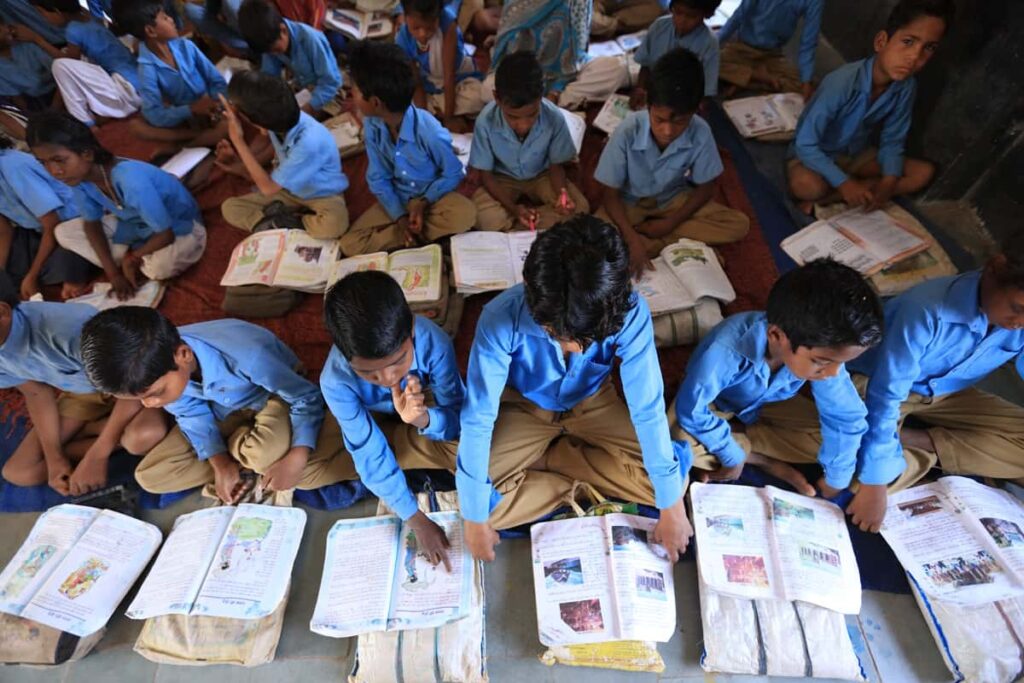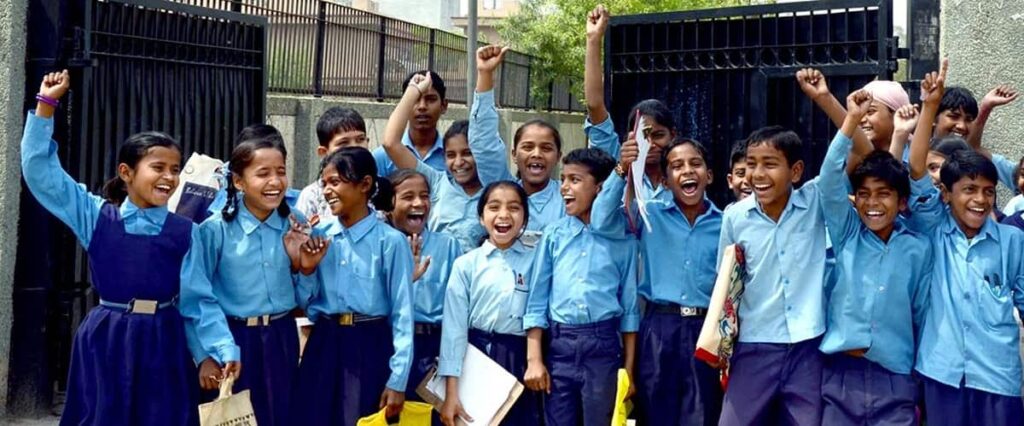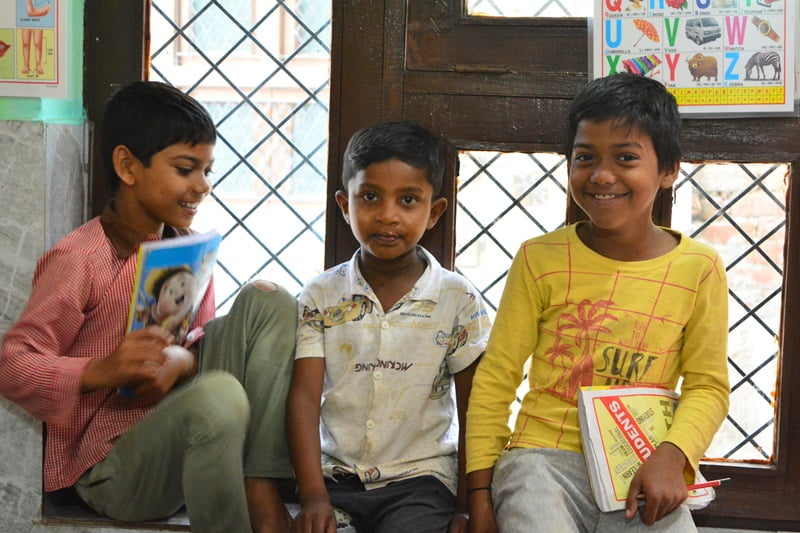
Importance of STEM Education for Children in India
Driven by innovation and technology, a strong foundation in STEM education is becoming increasingly important. This is because the approach to study ....
Read MoreImagine a classroom where every student feels supported and has what they need to learn and grow. This is the idea behind educational equity. It means giving all children a fair chance to succeed in school, irrespective of their background.
However, many children face challenges outside of school that make learning harder. These can include poverty, not having enough qualified teachers, or even being treated differently because of their race or background. Educational equity aims to fix this. Read along to learn more about educational equity and its importance.

Educational equity is about creating a fair and inclusive learning ambience where every student has the same opportunity to learn regardless of their background or circumstances. It goes beyond simply providing the same resources and opportunities to all students, recognizing that each individual requires different levels of support to achieve their full potential.
The concept of education for equity acknowledges that students come from diverse backgrounds and may face unique challenges or barriers that can impact their ability to learn effectively. Some students may struggle with language barriers, while others may come from economically disadvantaged families or have learning disabilities.
Simply put, equity in education means adapting the learning experience to meet the distinct needs of students rather than taking a one-size-fits-all approach.
India has made major progress in improving access to education, achieving nearly 100% enrollment at the primary school level. However, glaring inequalities persist across different marginalised groups. Enrollment rates drop rapidly as students progress to higher grades, with the decline being particularly steep for students with disabilities, those from Muslim, Scheduled Caste (SC) and Scheduled Tribe (ST) communities.
For instance, enrollment drops from 0.91% at the primary level to just 0.32% at higher secondary for students with disabilities (Source: International Journal of Inclusive Education, 2023). Similar trends are seen for female students, especially in rural areas, where cultural factors like early marriage contribute to lower attendance rates in secondary grades.

By fostering greater equity in education, educators empower students to develop the skills and confidence needed to become the leaders of tomorrow. In fact, students who attended more diverse learning environments exhibited greater improvements in their leadership skills, equipping them with the critical thinking and problem-solving skills essential for future success.
A few more points that highlight the importance of equity in education are:
The path towards educational equity, despite its undeniable benefits, is fraught with challenges. Creating a level playing field in education requires addressing complex issues. Many roadblocks can prevent students from getting the support they need. Let's explore some of the biggest barriers to equity in education.
Children from low-income families often don't have access to quality resources, struggle with meeting basic needs like nutrition and healthcare, and may have to prioritise working to support their families over schooling. For example, a child born into poverty is much less likely to have access to early childhood education programs, educational toys and books at home, or tutoring services to support their learning.
Schools in rural or economically depressed areas tend to be underfunded, lack adequate facilities and teaching staff, and offer fewer advanced courses or extracurriculars. In some cases, students may have to travel long distances to reach the nearest school, making access challenging. Geographical disparities can manifest in glaring differences between urban and suburban school districts or even among neighbouring communities.
In many cultures, societal norms and gender stereotypes hinder equal access to education for girls and women. From facing discouragement in fields where girls are traditionally underrepresented, to dropping out due to child marriage or household responsibilities, gender inequality remains a major barrier to girls' education. Even in relatively progressive societies, implicit biases and a lack of role models can limit gender equality in education and opportunities for young women.
Language barriers can hinder comprehension and academic performance, while a lack of culturally relevant curriculum and teaching methods can lead to disengagement. Unfair treatment based on race, even if it's unintentional, can make students feel like they don't belong. This can hurt their confidence and make them feel bad about themselves at school.
Fortunately, there are many things we can do to break down these barriers and create a more equitable learning environment for all students. Let's get into some strategies that can help promote educational equity and ensure all children have the chance to thrive.
Governments and education authorities can play a crucial role in addressing inequities through policy measures. This can include revising school funding formulas to direct more resources to underprivileged areas, implementing affirmative action policies for underrepresented groups, and mandating inclusive curriculum and accommodations. For example, some countries have introduced free school meal programs to support students from low-income families.
Child education NGO like CRY India and community-based organizations can complement government efforts by working directly with marginalized communities. They can provide supplemental education services, conduct outreach to raise awareness about education's importance, and advocate for policy changes. For instance, CRY India's initiatives focus on ensuring children access quality education and creating a conducive learning environment.
Rethinking traditional teaching methods and embracing innovative practices can help create a more balanced learning experience. Approaches like project-based learning, culturally responsive pedagogy, and incorporating technology can make education more engaging and accessible. A good example is using multimedia resources and hands-on activities to support students with different learning styles.
Equipping teachers with the right skills and mindsets is crucial for promoting equity in the classroom. Professional development programs can focus on topics like implicit bias, cultural competency, differentiated instruction, and creating inclusive learning environments. Schools can conduct workshops on gender-neutral language and avoid stereotypical portrayals in teaching materials.
At CRY India, we recognise that ensuring education equity is crucial for creating a level playing field and empowering children from marginalised communities. As a result, we identify and enrol children from disadvantaged backgrounds, such as those from lower-caste communities, tribal populations, or families with economic constraints.
We also work closely with local communities to raise awareness about the necessity for quality education and encourage parents to send their children—especially girls—to schools. Additionally, CRY India advocates for policy changes that promote inclusivity and support implementing government schemes to provide educational opportunities for underprivileged children.
While ensuring all students have access to quality learning materials is crucial, it is equally important to dismantle systemic barriers and create an inclusive environment at all levels of the education system. Schools and districts must take a hard look at their existing policies and practices to identify areas of inequity and then work to reform them through measures like hiring equity directors, reviewing staff training programs, and launching new initiatives to support underserved student populations.
NGOs such as CRY India are pivotal in promoting educational equity by providing access to quality education for marginalised and underprivileged communities. We address barriers such as poverty, gender discrimination, and geographical limitations by offering scholarships, creating educational programs, advocating for policy changes, and supplying necessary learning materials and infrastructure.
Educational equity contributes to social justice by ensuring that all individuals have equal opportunities to succeed regardless of their background or socioeconomic status. Levelling the playing field helps to reduce disparities in education, thereby enabling a fairer distribution of resources and opportunities, fostering inclusive growth, and empowering individuals to contribute meaningfully to society.